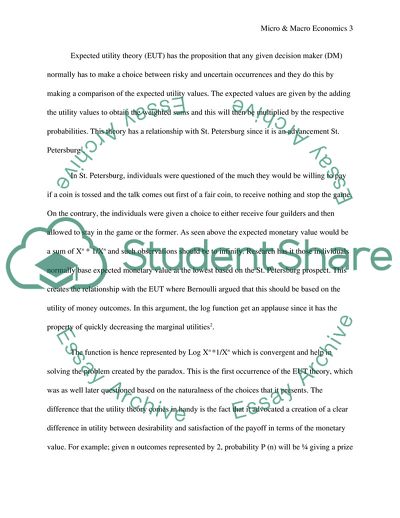Cite this document
(With appropriately chosen utlity functions, expected utility theory Essay, n.d.)
With appropriately chosen utlity functions, expected utility theory Essay. https://studentshare.org/macro-microeconomics/1813154-with-appropriately-chosen-utlity-functions-expected-utility-theory-can-account-for-the-common-ratio-effect-as-well-as-the-phenomenon-of-simultaneous-gambling-and-insurance-and-the-st-petersburg-paradox-discuss
With appropriately chosen utlity functions, expected utility theory Essay. https://studentshare.org/macro-microeconomics/1813154-with-appropriately-chosen-utlity-functions-expected-utility-theory-can-account-for-the-common-ratio-effect-as-well-as-the-phenomenon-of-simultaneous-gambling-and-insurance-and-the-st-petersburg-paradox-discuss
(With Appropriately Chosen Utlity Functions, Expected Utility Theory Essay)
With Appropriately Chosen Utlity Functions, Expected Utility Theory Essay. https://studentshare.org/macro-microeconomics/1813154-with-appropriately-chosen-utlity-functions-expected-utility-theory-can-account-for-the-common-ratio-effect-as-well-as-the-phenomenon-of-simultaneous-gambling-and-insurance-and-the-st-petersburg-paradox-discuss.
With Appropriately Chosen Utlity Functions, Expected Utility Theory Essay. https://studentshare.org/macro-microeconomics/1813154-with-appropriately-chosen-utlity-functions-expected-utility-theory-can-account-for-the-common-ratio-effect-as-well-as-the-phenomenon-of-simultaneous-gambling-and-insurance-and-the-st-petersburg-paradox-discuss.
“With Appropriately Chosen Utlity Functions, Expected Utility Theory Essay”. https://studentshare.org/macro-microeconomics/1813154-with-appropriately-chosen-utlity-functions-expected-utility-theory-can-account-for-the-common-ratio-effect-as-well-as-the-phenomenon-of-simultaneous-gambling-and-insurance-and-the-st-petersburg-paradox-discuss.


